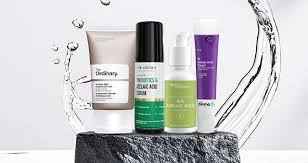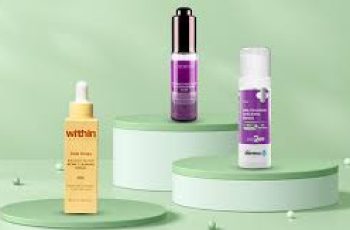
How to Use Niacinamide and Azelaic Acid for Radiant, Healthy Skin
In the ever-evolving beauty industry, where trending ingredients and “holy grail” formulas constantly take center stage, some powerhouse actives quietly work wonders under the radar.
Two such ingredients are niacinamide and azelaic acid—skin-perfecting heroes that deserve more attention for their gentle effectiveness and ability to treat a range of skin concerns.
When used individually, they support clearer, calmer, and brighter skin—but when combined thoughtfully, they form a synergistic duo that boosts overall skin health and glow.
In this guide, we’ll explore what makes niacinamide and azelaic acid such standout ingredients, how to use them together, and what to avoid for the best results possible.
If you’re unfamiliar with these ingredients, no worries—let’s dive into what each one does for the skin and how they work in harmony when used properly in your routine.
What Does Niacinamide Do for the Skin and Why Is It So Popular?
Niacinamide is a form of vitamin B3 that benefits all skin types thanks to its humectant properties, which help draw moisture into the skin and lock it in to keep hydration levels steady.
By boosting the skin’s water content, niacinamide supports a healthy skin barrier, which protects against daily aggressors like pollution, UV rays, smoke, and temperature fluctuations.
When your skin barrier is intact and hydrated, you’re less likely to experience sensitivity, redness, dryness, or breakouts triggered by external or internal environmental stressors.
Niacinamide also helps regulate oil production, making it an ideal choice for oily, combination, or acne-prone skin types that struggle with excess shine or clogged pores.
This versatile ingredient smooths fine lines, brightens dullness, reduces pigmentation, and improves overall skin texture without causing irritation or disrupting skin function.
What Does Azelaic Acid Do for the Skin and What Makes It Unique?
Azelaic acid is a naturally occurring acid derived from grains like barley, wheat, and rye, and is commonly used in leave-on treatments designed to gently resurface the skin.
Although often mistaken for an AHA or BHA, azelaic acid actually works by communicating with skin cells, encouraging them to behave normally and renew themselves efficiently.
This mild exfoliant helps clear clogged pores, smooth rough patches, and reduce visible pigmentation, leaving the skin brighter and more even-toned over time with consistent use.
Azelaic acid also helps reduce redness and inflammation, making it an effective ingredient for managing rosacea, acne-prone skin, and post-inflammatory hyperpigmentation.
Because it increases skin sensitivity to the sun, always pair azelaic acid with a broad-spectrum sunscreen of SPF 30 or higher to protect your progress and prevent new damage.
Can You Use Niacinamide and Azelaic Acid Together in the Same Routine?
Yes, you absolutely can use niacinamide and azelaic acid together, and in fact, many dermatologists and skincare enthusiasts recommend pairing them for enhanced skincare results.
Azelaic acid works to gently exfoliate dead skin cells, remove impurities, and reduce bacteria on the skin’s surface, helping to unclog pores and reduce breakouts over time.
At the same time, niacinamide provides hydration, strengthens the skin barrier, and calms inflammation, which makes it the perfect companion to azelaic acid’s resurfacing action.
This combination allows you to improve skin tone, texture, and hydration while reducing irritation and minimizing the risk of sensitivity from active ingredient use.
Just be sure to introduce both slowly if you’re new to them, and always do a patch test before adding them to your full routine to minimize any chances of irritation or reaction.
What Types of Products Contain Niacinamide and Azelaic Acid?
Niacinamide and azelaic acid are commonly found in products like serums, moisturizers, and treatment creams that are designed to be left on the skin and absorbed fully.
Because these products stay on the skin for extended periods, they typically contain higher concentrations of active ingredients, allowing for faster and more noticeable results.
Serums containing niacinamide help plump the skin, balance oil levels, and fade post-acne marks, while azelaic acid treatments work to exfoliate and calm blemish-prone areas.
When using both in your routine, start with lightweight water-based serums and follow with richer creams or moisturizers to help seal in actives and reinforce the skin barrier.
Avoid applying too many active ingredients in a single routine, as this may lead to redness, flaking, or stinging—especially if your skin is sensitive or compromised.
Should You Apply Niacinamide Before or After Azelaic Acid?
The order in which you apply skincare ingredients depends on the consistency of the products they’re formulated in—generally, apply from thinnest to thickest for best absorption.
If your azelaic acid product is a serum or gel with a lightweight texture, apply it first so it can properly exfoliate the skin and remove surface buildup and debris.
Once the skin is prepped and freshened by azelaic acid, follow with niacinamide to hydrate, strengthen, and calm any potential irritation from the exfoliating process.
If your azelaic acid comes in a thicker cream and your niacinamide is a light serum, you’ll want to reverse the order—starting with niacinamide and layering the cream over it.
No matter the order, give each product time to absorb fully before layering the next to ensure you get maximum benefits without compromising your skin’s tolerance.
What Should You Not Mix With Niacinamide in Your Routine?
Niacinamide is a well-tolerated, gentle ingredient that pairs well with most actives, including hyaluronic acid, ceramides, salicylic acid, and even retinoids in most skin types.
However, one common debate surrounds mixing niacinamide with vitamin C, as some studies suggest the two may cancel each other out or lead to reduced effectiveness.
That said, modern formulations have evolved, and many products now safely combine both without issue—just be cautious if you’re layering separate products containing these actives.
If you prefer to play it safe, apply vitamin C in the morning to protect against oxidative stress, and reserve niacinamide for evening use to hydrate and repair while you sleep.
Also, avoid combining niacinamide with too many exfoliants in a single routine, as it can overwhelm your skin and potentially lead to irritation or barrier damage.
Does Azelaic Acid Cause Skin Purging and Is It Normal?
Yes, azelaic acid can cause a temporary increase in breakouts when first introduced, which is often referred to as purging—a sign that cell turnover is increasing.
This purge happens as azelaic acid brings underlying clogs and congestion to the surface faster, clearing out impurities that may have taken weeks to emerge naturally.
Purging typically lasts a few weeks and results in clearer skin once the cycle completes, but it’s important to differentiate between purging and an adverse reaction.
If you notice painful bumps, excessive redness, flaking, or burning, you may be experiencing irritation, which could mean azelaic acid is too strong for your skin.
Always consult a dermatologist if you’re unsure, and consider introducing azelaic acid slowly—starting with a lower concentration a few times a week before daily use.
Can Azelaic Acid Help Fade Acne Scars and Hyperpigmentation?
Azelaic acid is highly effective for fading dark spots and acne scars due to its ability to accelerate cell renewal and reduce excess melanin production in the skin.
By gently exfoliating dead skin and blocking tyrosinase (the enzyme responsible for melanin creation), azelaic acid lightens spots left behind from breakouts or inflammation.
Consistent use can significantly reduce the appearance of post-inflammatory hyperpigmentation and even help prevent new spots from forming with regular use.
For best results, use azelaic acid in conjunction with daily SPF protection to prevent sun exposure from worsening pigmentation or triggering new discoloration.
It may take 8–12 weeks of consistent use to see noticeable fading, but when combined with other brighteners like niacinamide, progress often comes faster and more visibly.
Should You Apply Moisturizer Before or After Azelaic Acid?
Moisturizer should always be applied after azelaic acid to help hydrate the skin, seal in active ingredients, and create a protective barrier against environmental stressors.
Because moisturizers are generally thicker and contain emollients and occlusives, applying them last locks in the benefits of the ingredients you used earlier in your routine.
Look for moisturizers that contain niacinamide or hyaluronic acid to further enhance hydration, soothe redness, and support your skin’s recovery and repair processes.
Avoid using heavy oils or greasy moisturizers right after applying azelaic acid, as they may dilute its effect or prevent it from fully absorbing into the skin.
If you’re using both azelaic acid and niacinamide, apply them in the correct order and follow up with moisturizer to maintain hydration and minimize any sensitivity.
Final Thoughts: Should You Add Niacinamide and Azelaic Acid to Your Routine?
When used together, niacinamide and azelaic acid form a gentle but effective duo that targets everything from dehydration and dullness to redness, acne scars, and pigmentation.
Their calming, hydrating, and clarifying properties make them ideal for almost every skin type—even those that are prone to sensitivity, breakouts, or uneven tone.
Start slow, monitor your skin’s response, and always wear sunscreen during the day to protect your skin and maintain your progress with these powerhouse ingredients.
Whether used separately or layered strategically, this skincare pairing offers noticeable improvements in texture, brightness, and overall skin balance within weeks of consistent use.
If you’re new to either ingredient or have sensitive skin, speak with a dermatologist to create a personalized routine that fits your needs without risking irritation.


